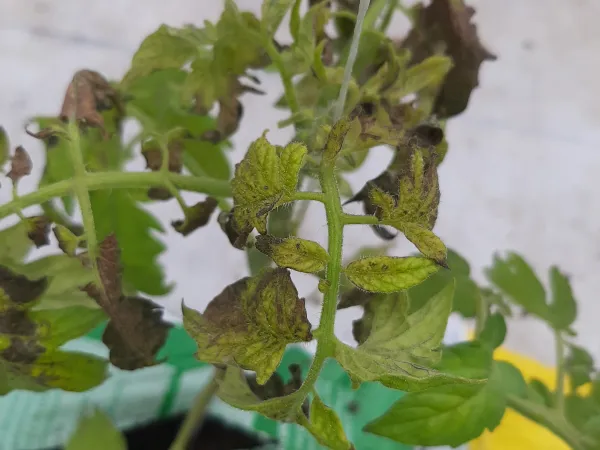For those unfamiliar with plant viruses, the names assigned to them can be misleading, as a virus’ host range is sometimes broad and the symptoms produced can be variable. Traditionally, plant viruses are named for the first host plant they are identified in association with and the predominant symptom they cause. Such is the case with tomato spotted wilt virus (TSWV) and impatiens necrotic spot virus (INSV). Despite their rather specific names, both of these viruses have wide host ranges and can cause a variety of symptoms on numerous floriculture and vegetable crops.
by Angela Madeiras and Jim Mussoni
Symptoms resembling those caused by TSWV and INSV have been observed recently on tomatoes and impatiens in greenhouses: tomatoes in one location tested positive for TSWV according to an immunostrip test. TSWV and INSV are closely related and may produce similar symptoms. On tomatoes and some other hosts, TSWV usually causes wilting and a characteristic pattern of small brown spots near the petiole end of leaflets. Plants may fail to set fruit or produce fruit that is heavily mottled. INSV typically causes round necrotic lesions or ringspots on leaves. Foliage may also display a yellow mosaic or line pattern. Both viruses can also cause stunting, stem necrosis, and yellowing, distortion, and/or abscission of leaves.

TSWV on tomato (J. Mussoni)
Both TSWV and INSV are transmitted by thrips. Western flower thrips (Frankliniella occidentalis) is an important vector of both viruses; in addition, TSWV may also be spread by onion thrips (Thrips tabaci) and tobacco thrips (Frankliniella fusca). Thrips larvae acquire the viruses by feeding on infected plants, and the viruses are transmitted to new hosts when adult thrips feed on them. The virus is not passed on from adult thrips to their progeny. Learn more about thrips and virus transmission.
Plant Virus Management
Inspect incoming plant material carefully, as plug trays and other propagation materials may be infected with viruses and/or infested with thrips when they are brought into the greenhouse. Vegetable starts in the greenhouse often become infected with TSWV or INSV when infected ornamentals are brought into the greenhouse and thrips are present. Keep greenhouses and surrounding environs free of weeds, as many species can harbor both thrips and viruses. There is no cure for plant virus infection: prevention of virus outbreaks in the greenhouse involves excluding infected plant material from the greenhouse, growing cultivars that show some resistance, and controlling thrips. For information on resistant vegetable cultivars, see http://vegetablemdonline.ppath.cornell.edu/. For information on products registered for thrips management, see the New England Greenhouse Management Guide.
